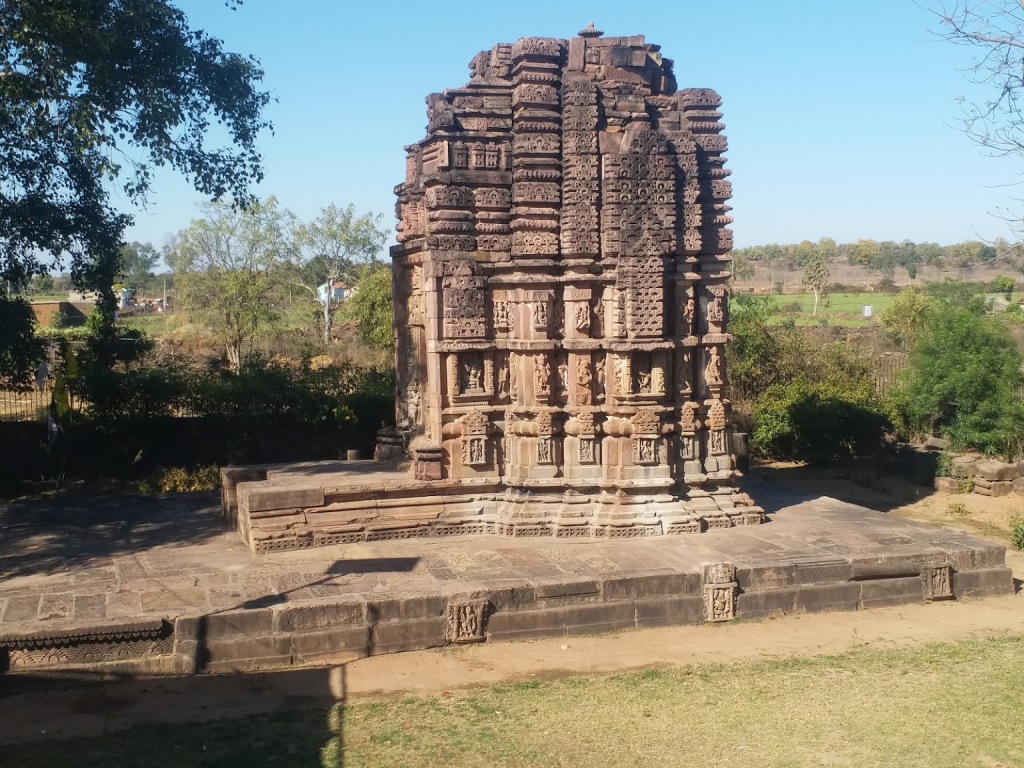Kodal Shiva Temple, Madhya Pradesh

Address
Kodal Shiva Temple, Taradevi Road, Kodal, Madhya Pradesh 470880
Diety
Shiva
Introduction
The Kodal Shiva Temple, dedicated to Lord Shiva, is indeed a significant historical and religious site in Madhya Pradesh, India.The Kodal Shiva Temple is dedicated to Lord Shiva, a major deity in Hinduism, often revered as the Lord of Destruction.The temple is situated in Kodal Village, which is part of the Tendukheda Tehsil in the Damoh District of Madhya Pradesh, India. Its location in a rural setting adds to its charm and historical context.The Archaeological Survey of India (ASI) has recognized the Kodal Shiva Temple as a “Monument of National Importance.”
Puranic Significance
The temple is believed to have been built in the year 950 CE by the Kalachuri Kings. This places its construction in the 10th century CE, making it an ancient and historically important site.The detailed description you provided offers a fascinating insight into the architectural and artistic features of the Kodal Shiva Temple and its surroundings.
Orientation and Platform: The temple is oriented towards the east and is built on a low raised platform. The exterior of the platform is adorned with a series of niches that house Shaiva sculptures at regular intervals.
Temple Structure: Originally, the temple consisted of both a sanctum (garbhagriha) and a mandapa. Unfortunately, the mandapa has been lost over time, but the sanctum remains intact.
Sanctum (Garbhagriha): The sanctum is pancharatha on plan, which means it has five projections or facets. The sanctum doorway is ornate and richly decorated.
Lintel: The lintel above the sanctum doorway is adorned with Navagraha figures, representing the nine celestial bodies in Hindu astrology. In the central position of the lintel is Uma Mahesvara.
Architrave: The architrave above the lintel features depictions of Saptamatrikas (the seven mother goddesses) in a dancing posture. They are flanked by Virabhadra and Ganesha, with Nataraja (Lord Shiva in his cosmic dance form) in the center.
Shikara (Spire): The shikara (spire) of the temple follows the nagara style of architecture. However, the top portion of the shikara is in damaged condition, possibly due to the passage of time.
Jangha: The jangha (the body of the temple) features a standard design with two rows of figures. The lower row bears depictions of Surasundaris, while the upper row features vyalas (mythical creatures).
Bhadra Niches: The bhadra niches (secondary niches) on the temple have images of Nataraja on the south and Andhakantaka on the east. The south kapili niche houses Vinayaga (Lord Ganesha) with Vighnesvari.
Festoon Design: The jangha terminates with a festoon design, adding to the decorative elements of the temple.
Monastery Ruins: Near the temple, there are ruins of a large monastery, indicating the presence of a significant religious complex in the vicinity.
The Kodal Shiva Temple and its associated sculptures and architectural elements reflect the rich cultural and artistic heritage of the region.
Century/Period/Age
950 CE
Managed By
Archeological survey of India.
Nearest Bus Station
Kodal
Nearest Railway Station
Deori
Nearest Airport
Damoh




